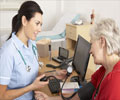Clinic readings were found to underestimate blood pressure during daily activities, reveals study.

TOP INSIGHT
Masked Hypertension is normal blood pressure in the doctor's clinic but high readings outside of the clinic. Masked hypertension is easy to miss and can occur during the day or night.
In this study, researchers compared clinic blood pressure measurements to ambulatory blood pressure monitoring in 888 healthy, middle-aged participants enrolled in the Masked Hypertension Study at Stony Brook University and Columbia University in New York between 2005 and 2012.
They found: 15.7 percent of participants with normal clinic blood pressure had masked hypertension based on ambulatory monitoring, regardless of sex, race, or ethnicity.
Younger, normal-weight participants were more likely than older, overweight participants to have ambulatory blood pressure readings higher than their clinic readings.
"These findings debunk the widely held belief that ambulatory blood pressure is usually lower than clinic blood pressure," Joseph E. Schwartz, Ph.D., study lead author and professor of psychiatry and sociology, at Stony Brook University, in Stony Brook, New York. "It is important for healthcare providers to know that there is a systematic tendency for ambulatory blood pressure to exceed clinic blood pressure in healthy, untreated individuals evaluated for hypertension during well-patient visits. Our study's results may not apply to those who have previously been diagnosed as having hypertension or are already being treated for hypertension."
All participants were employed which excluded retired, older people who are more likely than younger adults to have high blood pressure. Researchers said their research needs to be confirmed in further studies with more diverse populations.
Source-Eurekalert
 MEDINDIA
MEDINDIA




 Email
Email



